*Originally published as a blog post in 2017

Love is not a sin, Image: Muheb Esmat
It was 5:30 AM when my alarm rang, and with the sun still rising, I left our apartment in search of picturing the voices of the streets at their quietest times. In the midst of Kabul's constantly blocked roads, tall blast walls, heavy traffic, and street vendors selling everything from self-made to cheap Chinese replicas, it’s the graffiti scene that is even more inviting. For a long time, there’s been a culture of graffiti and writing on walls, where boys and even some girls would write their names, geographical and tribal ties for bragging rights in the neighborhood or to express their love for that one crush. Even in a super traditional culture where relationships of opposite genders are still looked down upon and where there are restrictions around love. But now, there is a new graffiti scene that goes far beyond the past. These new artists seek to create art that draws attention, asks questions, and more importantly, creates a dialogue around their work in the context of local and international issues. Civic deliberation through the prism of art.
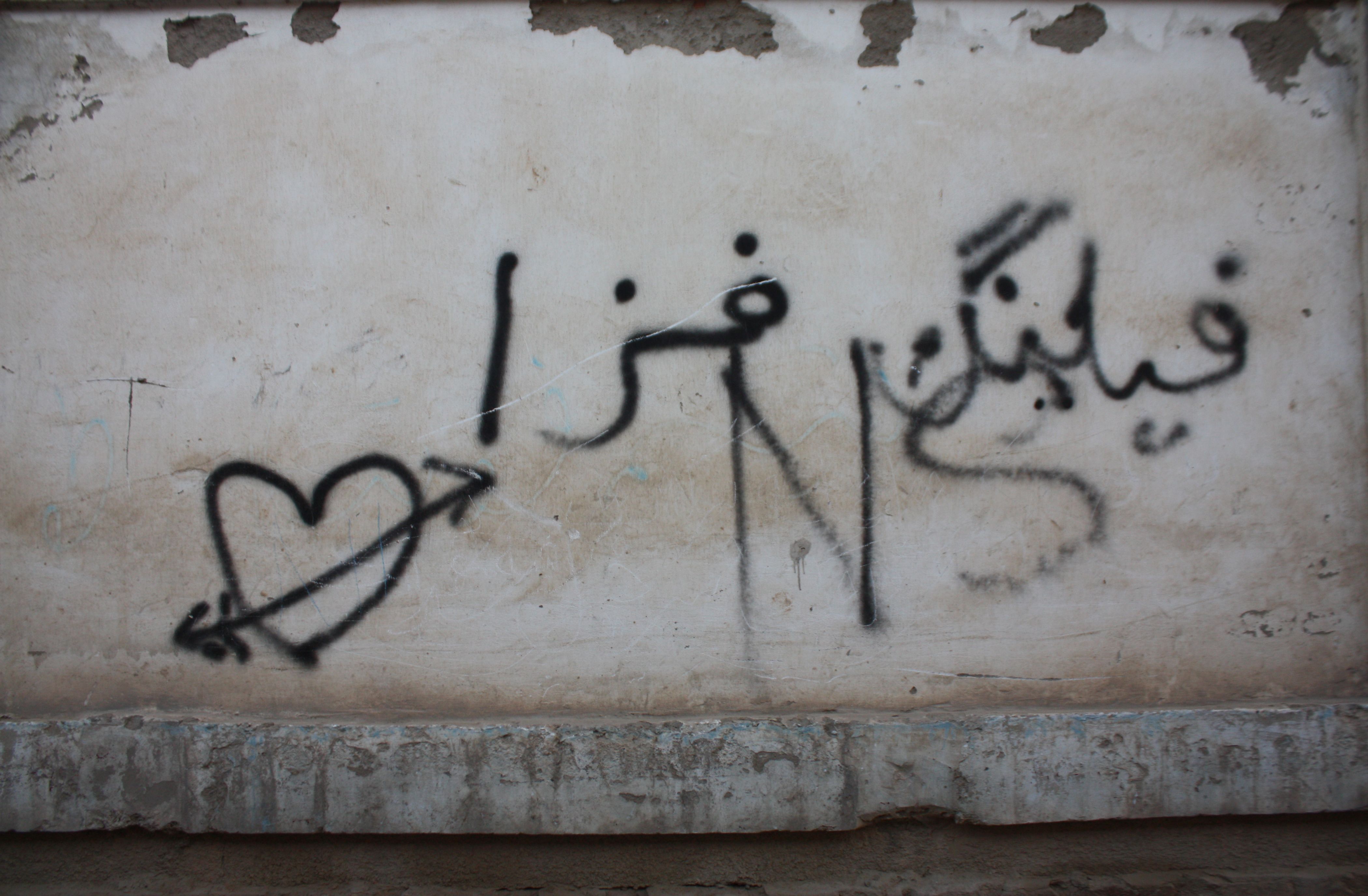
Feeling space, Image: Muheb Esmat
Commercial graffiti, and more specifically, stenciled ads for waterproofing services, private schools, universities, kindergartens, hospitals, driving schools, and even proposal writing services, are so many that after a while they become part of the everyday scenery. While families and friends have rejected and restricted love and relationships, it’s the public and even private walls around the city that have accepted this young generation’s rebellion against the old norms. Buried behind the curtain of the very common commercial and personal graffiti is an emerging young, beautiful, and surreal graffiti movement. In the midst of all the walls I saw during this week that I spent hopping from neighborhood to neighborhood and street to street as if I was tracing the paths of local vegetable vendors, there was one single work that stood out from the rest. It had nothing to do with its sheer size or the artist’s skills; it was all about the subject of his work. It was a stencil of the surrealist master Salvador Dali himself, with a quote in Dari reading: “Dali: I am surrealism myself.”
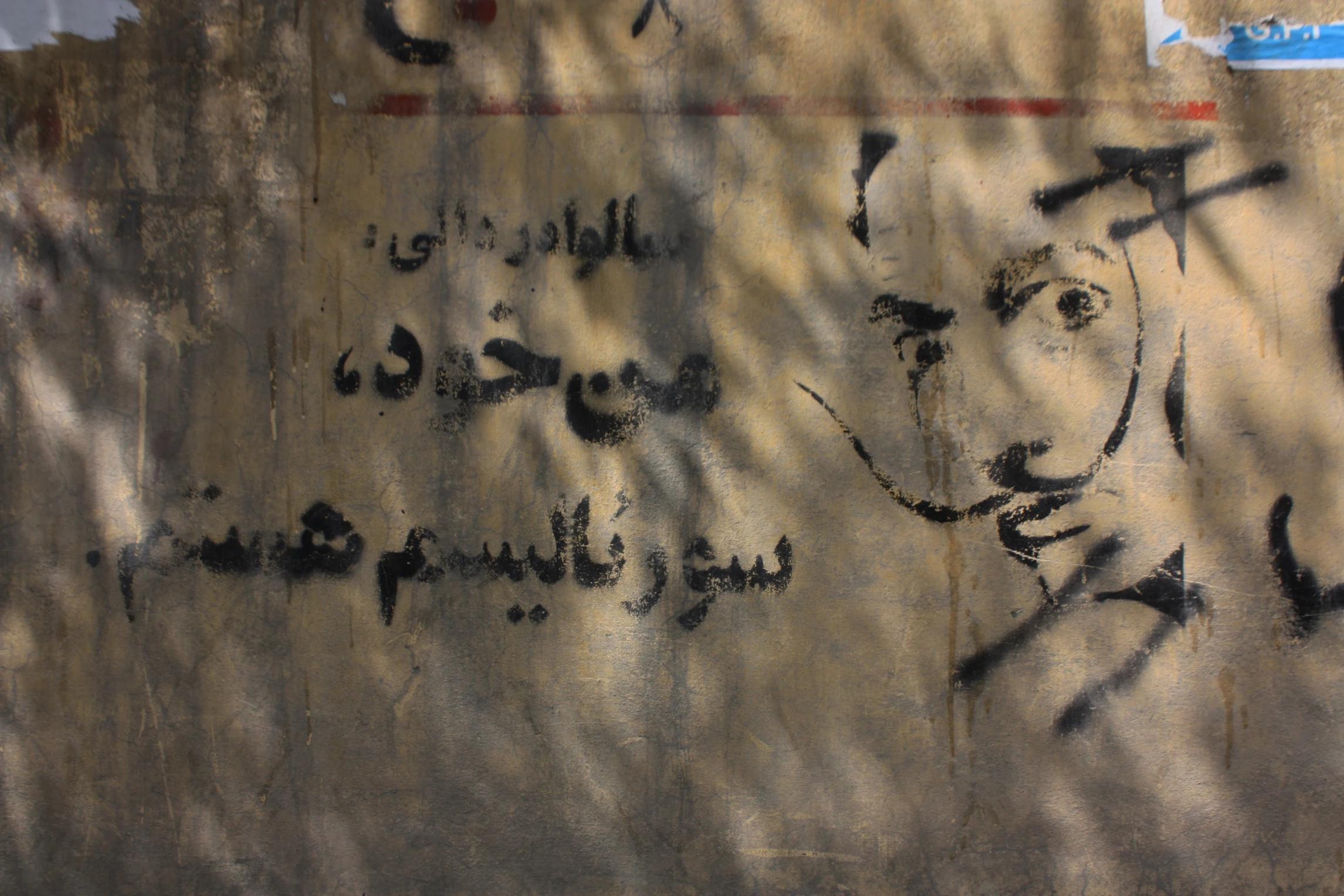
Salvador Dali: I am Surrealism, Image: Muheb Esmat
It’s not just Dali's remarkable mustache that perfectly fits the masculine style of this city; it's the surrealism of his thoughts that has sunk deep into Kabul’s soil with every layer of dust that rests at dawn. To Dali, a master of surrealism, paranoia was an essential mechanism in the construction of reality. He was a believer in old age, chastity, and anarchy. Values not uncommon to Kabul. As the sun sunk behind the high mountains guarding the city, I sat on top of a dirt hill in the park. Looking down upon a group of young men passing a ball around, some with their traditional clothes tied to their waists and others sporting sandals on the pitch. Kabul is as surreal as it could get in Dali’s mind. It’s a city where the taxi driver leaving home in the morning says his goodbyes as if not sure he will be back in the evening; streets are crowded with beggars, while modern villas keep popping up on every corner; it’s where everyone lives for the moment, as there is no guarantee of tomorrow. Decadence, death, and immortality are the characteristics of the powerful, while the rest live only to be in the memories of their closest few.
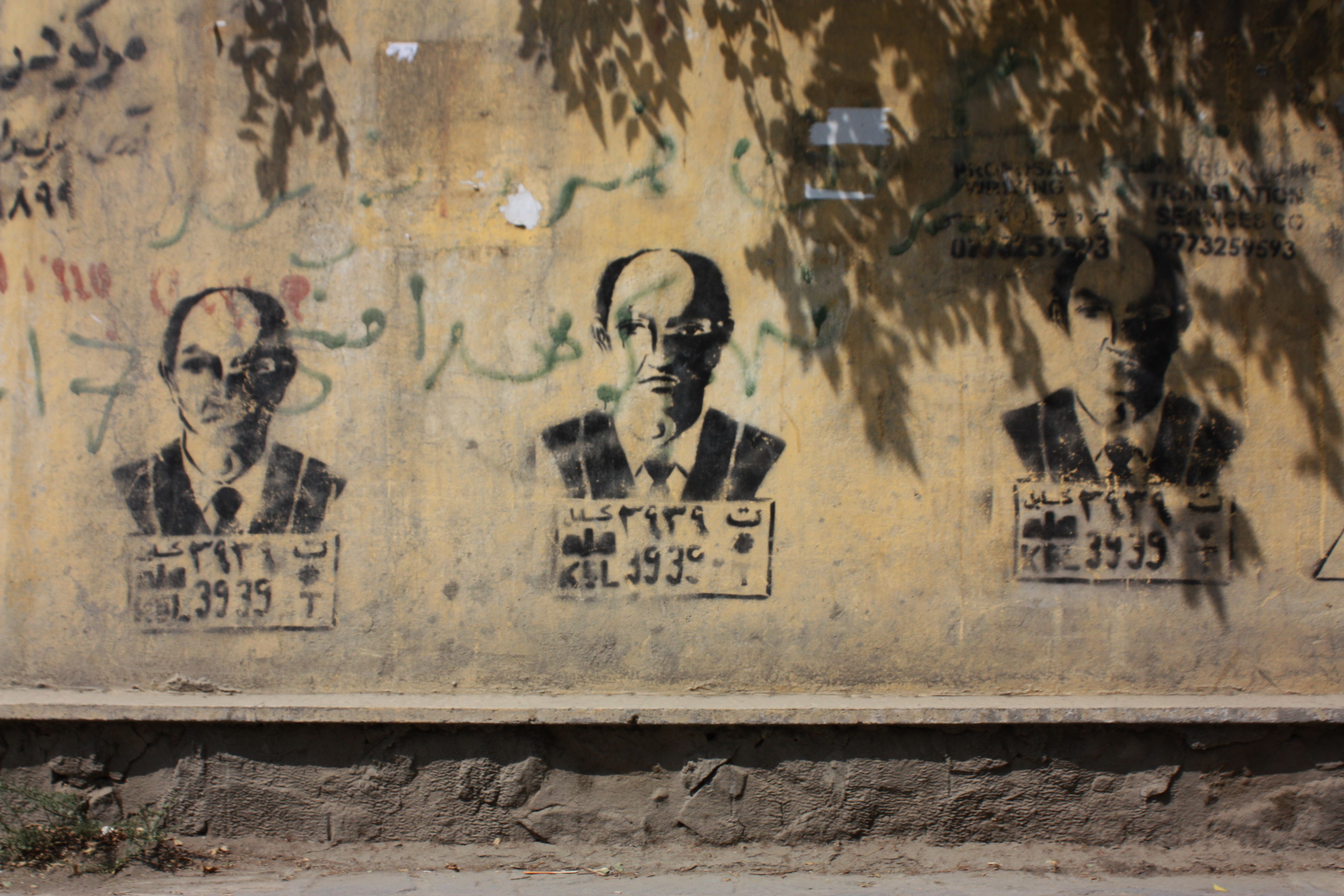
39, Image: Muheb Esmat
Dali driving a car full of cauliflowers was an uncommon and amusing scene to the people of his time. If that were to be happening in Kabul, he wouldn’t be the only one doing that, as taxi drivers pack their cars to the passenger seat transporting cauliflower. It’s a city that is still ruled by the old guard but in a newer and fancier uniform, disguised beneath the shades of a new democracy that still has a strong smell of anarchy. Just like Dali, it adores weakness and luxury, while death is noble, sublime, erotic, and--to some--even beautiful. Murderers, mischievous personalities, and warlords have become heroes and symbols of both courage and peace, with billboards and posters celebrating their death on every street corner, shop, and car window.
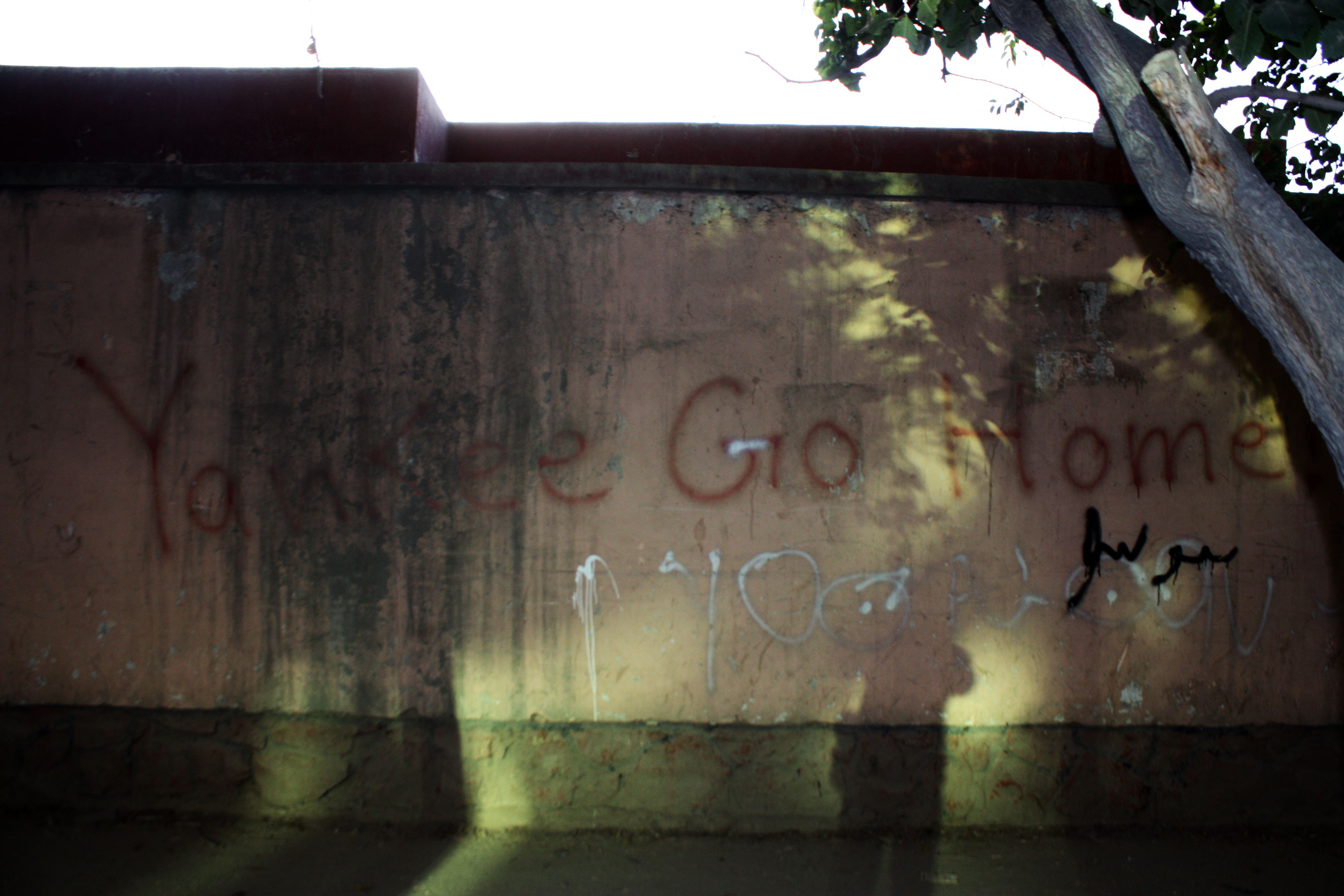
Yankee Go Home, Image: Muheb Esmat
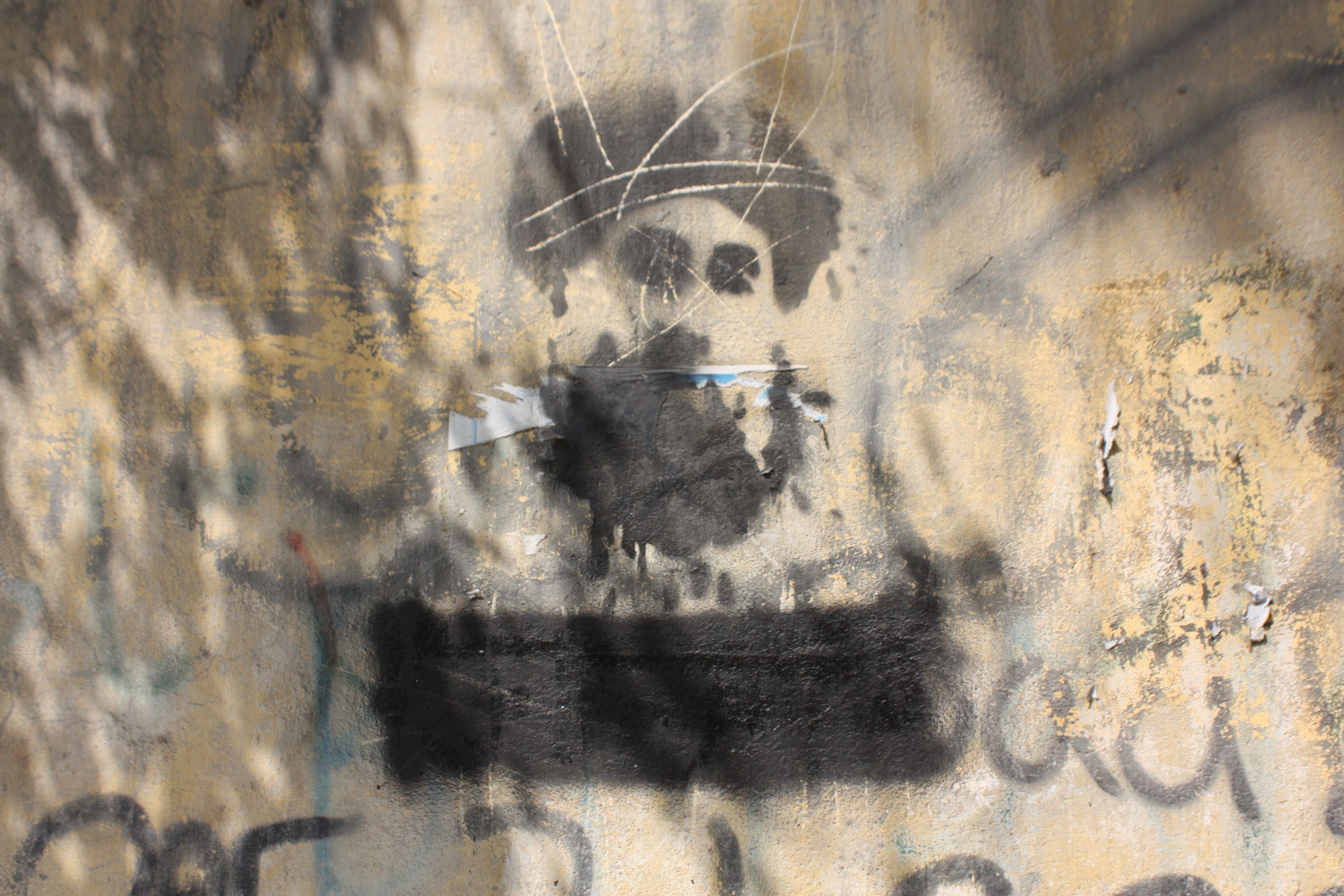
"Butcher of Kabul," Image: Muheb Esmat
It’s this surreal society that is feeding a young generation of artists hungry to make a difference. Works such as this stencil of warlord Gulbuddin Hekmatyar, formerly in exile, who was recently welcomed to Kabul with a rousing reception by the government, with the now-censored text that used to read “Butcher of Kabul,” is the creation of a new wave of artists bringing out the voice and pain of the people to the eyes of the public. Thus, another artist has shaped their frustrations and hopes into a bold sulh, meaning “peace” in the local Dari language. While its gloomy and sad eyes look down upon streets that have hardly seen any form of peace and security for decades."
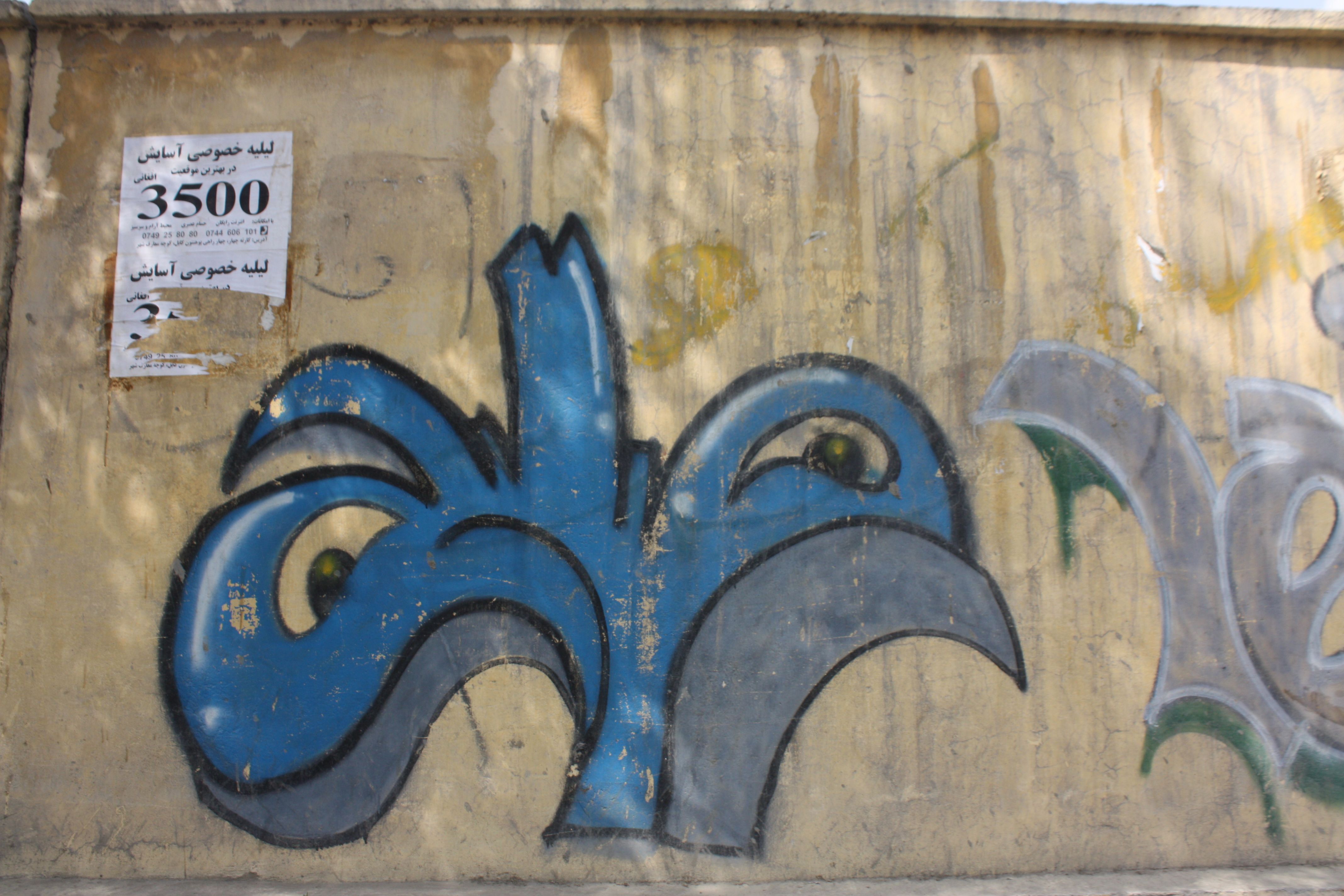
Peace, Image: Muheb Esmat
Artist Shamsia Hassani, a major figure figure in this recent graffiti movement, has taken to adorning walls with her female character, often in a state signifying both strength and discomfort. Here, she depicts her female character with hands around her head protecting her from the hurling winds, potentially symbolizing the constant waves of criticisms, restrictions, and abuse that females face in this male-dominated society. A nation that prides itself on its rebellious tendency has finally found a new medium for its defiance. If these early works are a sign of what is to come in the future, surely it promises to be beautiful and inspiring in its way.
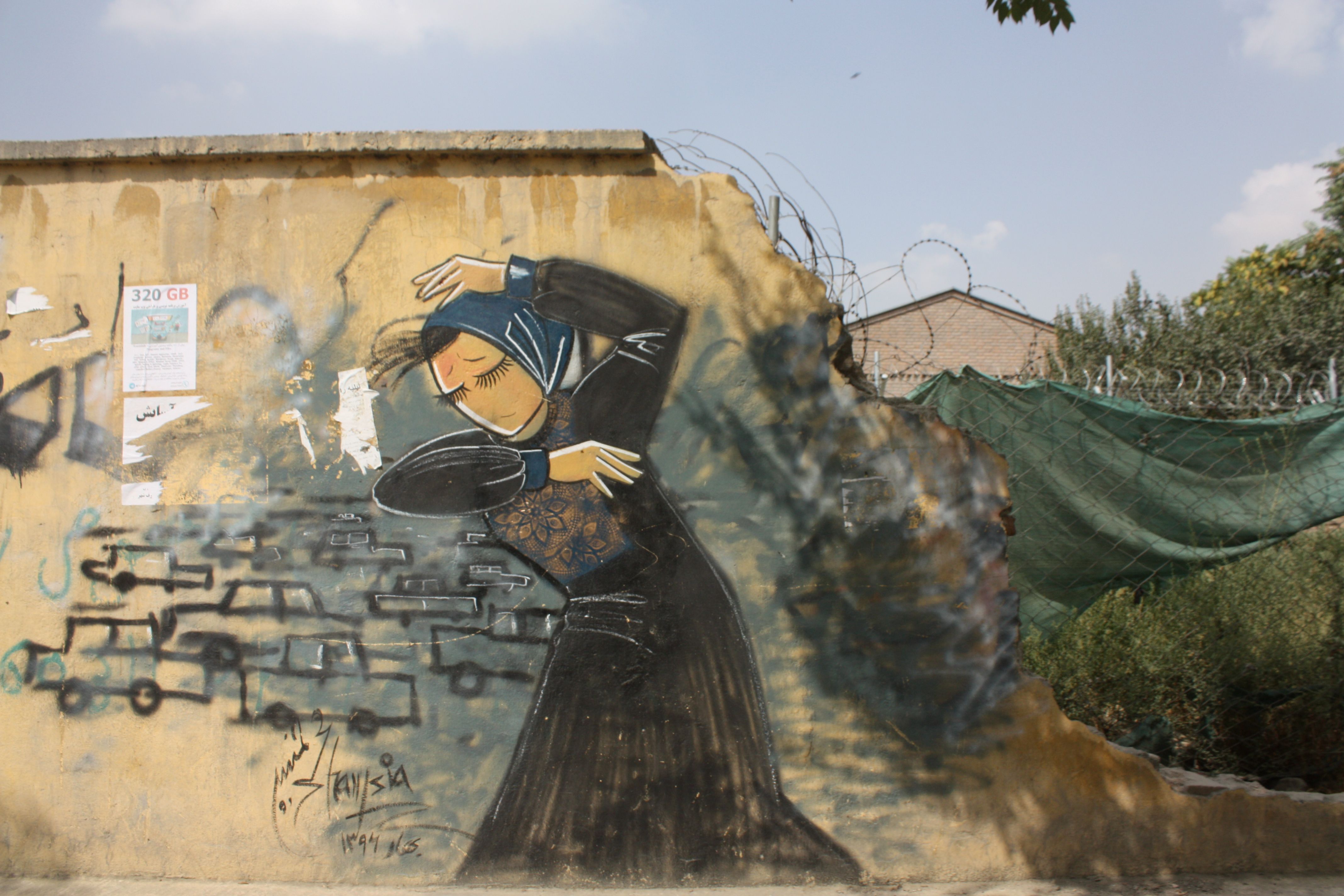
Shamsia Hassani, Image: Muheb Esmat
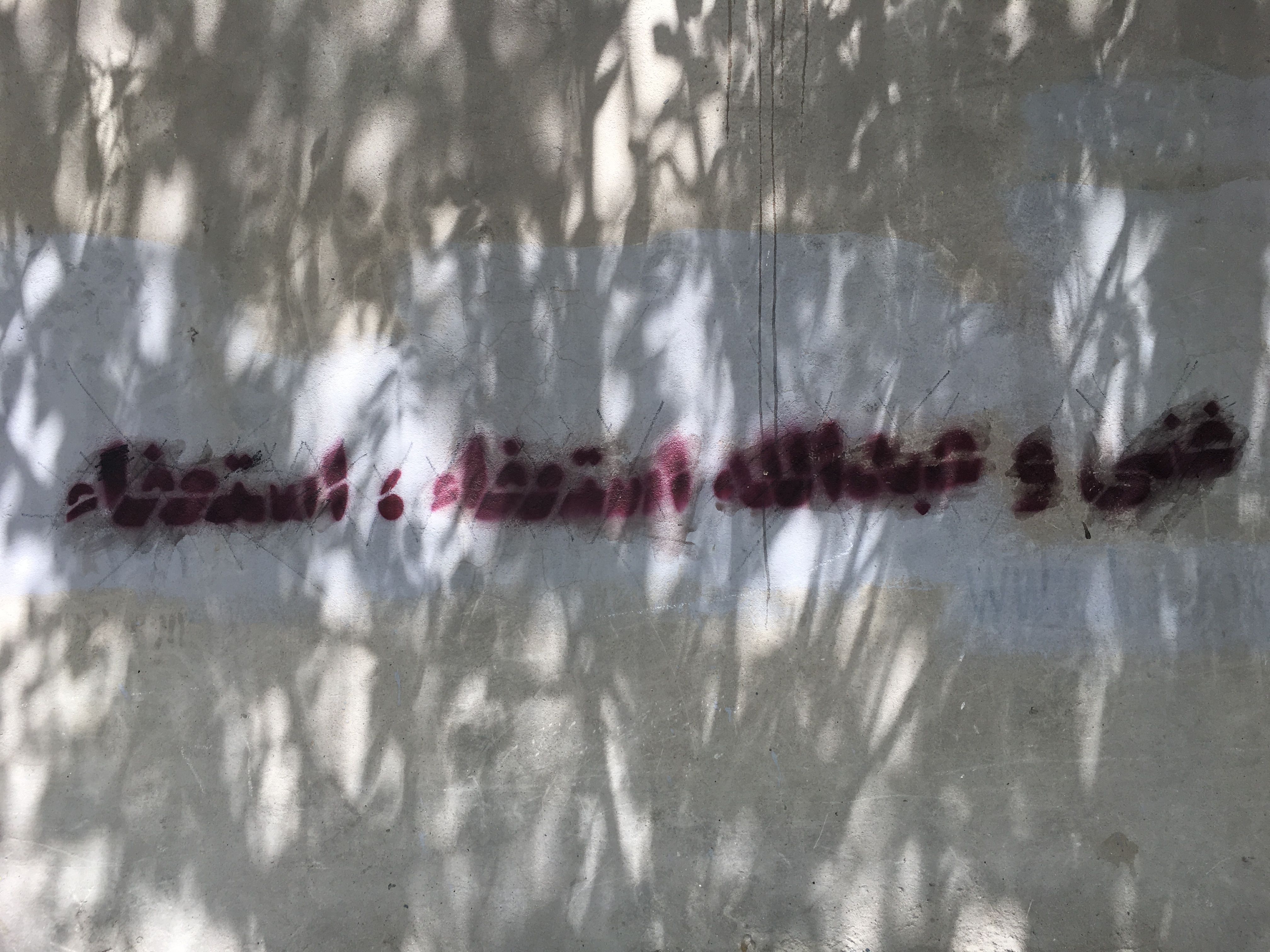
Ghani and Abdullah, Resign! Resign!, Image: Muheb Esmat








